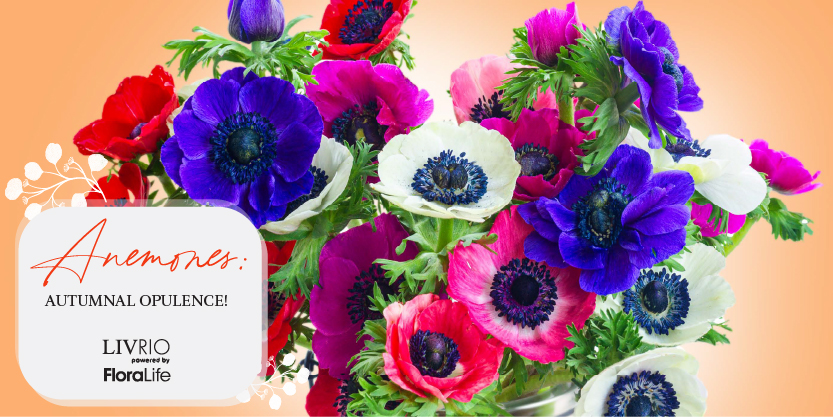Anemones: Autumnal Opulence!
LivRio Magazine October 2025, powered by FloraLife

With their luscious velvety petals, no other flower delivers opulence quite like Anemones. Gloriously drenched in color, whether it be flagrant pink, or urbane Bordeaux, these blooms are sure to be the focus of any autumnal arrangement.
Care and Handling Information
Purchasing
- Anemones can be ethylene sensitive. Use suppliers that treat with an ethylene action inhibitor such as EthylBloc™ or FloraLife® EthylGuard at farm level to protect against exposure. Do not place near products that produce ethylene.
- Choose strong stems with closed or slightly open flowers.
- Inspect for bruising and botrytis.
Re-hydration at Store Level
- Start processing with a clean bucket, sanitized with FloraLife® D.C.D.® Cleaner.
- Dry packed stems should be conditioned to prevent blockage and promote uptake. Cut stems approx. 1+” using clean, sanitized clippers or knife. Treat with FloraLife® Quick Dip.
- Place flowers in a holding solution such as FloraLife® Express Ultra 200. Do not put flowers directly in metal/galvanized buckets. Use clean, high-quality water that has not been treated with a water softener as salt levels can damage flowers.
- Store in a cooler at 34 – 38° F (1-3C).
- Allow minimum 2 hours to hydrate placing buckets in an area with good airflow.
- Always remember FIFO (first in/first out) when rotating Anemones or other flowers.
Vase Care
- Remove any leaves that might be below the vase solution.
- If received dry, cut approximately 1” or more off stems. Use clean, sanitized clippers or knife, and treat with FloraLife® Quick Dip.
- Place immediately into properly dosed vase solution (water and either FloraLife Crystal Clear® or FloraLife® Express 300 Flower Food).
- Keep away from direct sunlight and fruits.

CONTEST!
Send us a picture of your Anemones arrangement(s) at [email protected] for a chance to win our Fresh-Cut Flower Care Kit. Contest ends October 31st, 2025. We will announce the winner on November1st, 2025.
*Product availability depends upon geographical region
